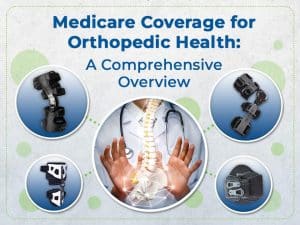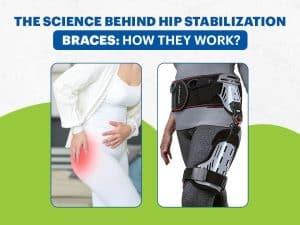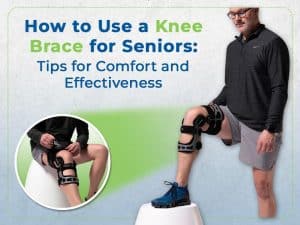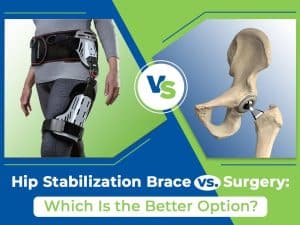Orthopedic devices and mobility aids are invaluable companions for individuals with musculoskeletal issues and mobility challenges. These aids are designed to enhance comfort and support and improve overall quality of life. In this comprehensive guide, we will explore how orthopedic devices and mobility aids covered by Medicare play a pivotal role in enhancing the well-being and independence of beneficiaries. From understanding eligibility criteria to navigating the process of obtaining these aids, we will delve into the essential aspects of accessing the support you need for a more comfortable and active lifestyle.
Understanding Medicare Coverage for Orthopedic Devices
Before we explore the various orthopedic devices and mobility aids covered by Medicare, it’s crucial to understand how Medicare’s coverage operates in the context of orthopedic health. Medicare is a federally administered health insurance program for seniors 65 and older. However, it also extends coverage to specific individuals with disabilities. While Medicare encompasses a broad spectrum of medical services, its role in orthopedic health is of paramount importance due to the prevalence of musculoskeletal issues among the elderly population.
Eligibility for Medicare Coverage
Individuals must meet specific eligibility criteria to access Medicare coverage for orthopedic devices and mobility aids. Understanding these criteria is essential for those seeking assistance managing their musculoskeletal conditions or mobility challenges.
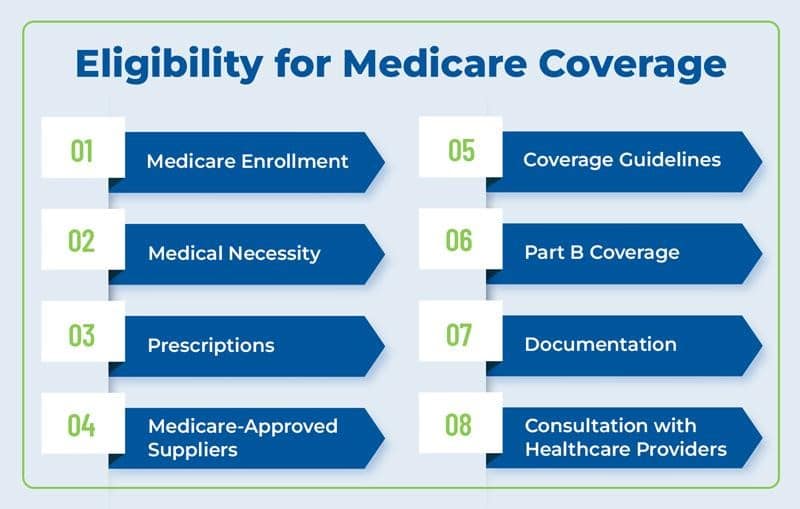
- Medicare Enrollment: To be eligible for coverage, individuals must be enrolled in Medicare. Medicare is primarily available for people 65 and older, although some younger individuals with specific disabilities also qualify. Medicare Parts A and B enrollment is typically required to cover orthopedic devices and mobility aids.
- Medical Necessity: Medicare covers orthopedic devices and mobility aids when necessary. This means that a qualified healthcare provider must determine that such equipment is essential to managing a medical condition, improving mobility, or enhancing the patient’s quality of life.
- Prescriptions: In most cases, a healthcare provider’s prescription is required to obtain orthopedic devices or mobility aids through Medicare. The prescription should clearly outline the medical necessity and specify the type of equipment needed.
- Medicare-Approved Suppliers: Medicare has a list of approved suppliers for durable medical equipment, including orthopedic devices and mobility aids. It’s crucial to choose a supplier from this list to ensure reimbursement. These suppliers have met Medicare’s standards for providing quality equipment and services.
- Coverage Guidelines: While Medicare covers many orthopedic devices and mobility aids, it’s essential to be aware of specific coverage guidelines. For instance, Medicare may cover a manual wheelchair for someone with mobility limitations but may not cover certain luxury features. Understanding these guidelines can help individuals make informed choices.
- Part B Coverage: Medicare Part B typically covers durable medical equipment, including orthopedic devices and mobility aids. Beneficiaries should have Part B coverage to access these benefits. Part B also typically requires a monthly premium.
- Documentation: To initiate coverage, individuals must provide the necessary documentation, including the prescription, medical records, and supplier information. Proper documentation ensures that the claims process proceeds smoothly.
- Consultation with Healthcare Providers: Beneficiaries should consult with their healthcare providers to discuss their needs and determine the most appropriate orthopedic devices or mobility aids. Healthcare providers can assist in the prescription process and guide individuals through Medicare’s coverage requirements.
Medicare-Approved Suppliers: Your Source for Quality Devices
When seeking Medicare coverage for orthopedic devices and mobility aids, choosing a Medicare-approved supplier is one key aspect. These suppliers play a pivotal role in the process, ensuring that beneficiaries can access high-quality devices covered by Medicare. It’s essential to understand how to identify these approved suppliers and navigate the path to acquiring the aids you require for improved musculoskeletal health and enhanced mobility. In the following sections, we’ll explore the steps and considerations in finding the right Medicare-approved supplier to meet your orthopedic device needs.
Benefits of Orthopedic Devices and Mobility Aids
Orthopedic devices and mobility aids are invaluable for individuals with orthopedic issues or mobility limitations. These advantages extend beyond physical support and can significantly enhance one’s overall quality of life. Here, we’ll delve into some of the remarkable benefits these aids provide:
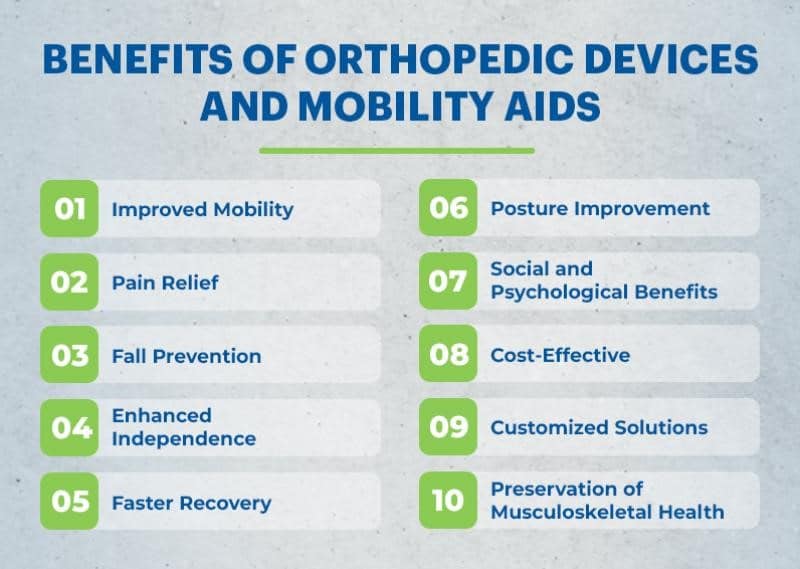
- Improved Mobility: Perhaps the most apparent benefit is the enhancement of mobility. Mobility aids such as wheelchairs, walkers, and scooters enable individuals to move around more freely, increasing independence and reducing the reliance on others for assistance.
- Pain Relief: Orthopedic devices like braces, supports, and splints are designed to alleviate pain and discomfort associated with musculoskeletal conditions. By providing targeted support, they reduce strain on affected areas, leading to pain relief and improved well-being.
- Fall Prevention: Mobility aids that enhance stability, such as canes and rollators, play a crucial role in fall prevention. Falls can lead to severe injuries, and these aids reduce the risk, allowing individuals to navigate their surroundings safely.
- Enhanced Independence: Orthopedic devices and mobility aids empower individuals to perform daily activities with greater independence. This not only boosts self-esteem but also preserves dignity and autonomy.
- Faster Recovery: After surgery or injury, orthopedic devices aid rehabilitation. Devices like crutches, braces, and walkers provide the necessary support for safe and efficient recovery, enabling individuals to regain strength and mobility more quickly.
- Posture Improvement: Poor posture can contribute to musculoskeletal problems. Orthopedic devices like posture correctors and back braces help individuals maintain proper posture, reducing the strain on the spine and promoting long-term spinal health.
- Social and Psychological Benefits: Using orthopedic devices and mobility aids can boost an individual’s self-confidence and social participation. People who can move around independently and with less pain are more likely to engage in social activities and maintain an active lifestyle, leading to improved mental well-being.
- Cost-Effective: In many cases, orthopedic devices and mobility aids offer a cost-effective alternative to more invasive treatments or long-term care services. They reduce the need for medical interventions and hospitalizations, potentially saving individuals and the healthcare system substantial costs.
- Customized Solutions: Orthopedic devices can be tailored to meet an individual’s specific needs. These customized solutions ensure that individuals receive the most effective support for their unique musculoskeletal challenges, resulting in better outcomes.
- Preservation of Musculoskeletal Health: These aids provide immediate relief and contribute to the long-term preservation of musculoskeletal health. Reducing strain, promoting proper alignment, and facilitating pain management help prevent further deterioration of conditions like arthritis and joint degeneration.
Navigating the Process of Obtaining Orthopedic Devices
For beneficiaries seeking orthopedic devices and mobility aids through Medicare, it’s crucial to grasp the essential steps involved in the process. A clear understanding of this process is vital for efficiently accessing the support needed to enhance musculoskeletal health and mobility. In the following sections, we’ll outline the key steps and considerations to guide you through obtaining orthopedic devices and mobility aids via Medicare.
Read More: Maximizing Benefits: How to Make the Most of Medicare-Approved Braces and Devices
Maintaining Musculoskeletal Health with Orthopedic Devices
Orthopedic devices and mobility aids are invaluable for maintaining and improving musculoskeletal health. While they are often associated with immediate relief and support for specific conditions, their benefits extend beyond addressing acute issues. These devices are crucial in preventing further damage, supporting rehabilitation, promoting active living, enhancing posture, and managing chronic pain. By offering essential support and stability, they act as protective shields, aiding post-injury recovery and facilitating participation in physical activities. Moreover, they help individuals maintain proper posture and alleviate discomfort, ultimately contributing to a better quality of life and overall well-being.
Conclusion: Embracing a More Comfortable and Active Lifestyle
In conclusion, orthopedic devices and mobility aids covered by Medicare offer a lifeline to individuals facing musculoskeletal challenges or mobility limitations. By understanding Medicare’s role, eligibility criteria, and the benefits of these aids, beneficiaries can embrace a more comfortable, active, and fulfilling lifestyle. These aids empower individuals to regain their independence, improve their quality of life, and participate more fully in the activities they love. From wheelchairs and walkers to orthopedic braces and prosthetic limbs, these devices are not just tools but gateways to a life that knows no bounds. Medicare’s support ensures that those in need can access these aids and continue their journey toward a more comfortable and active lifestyle.


